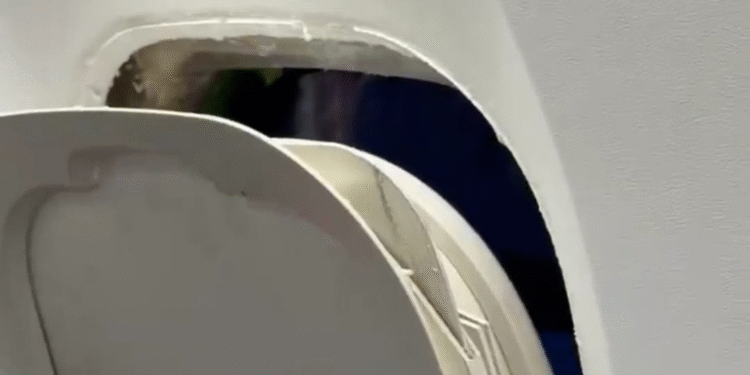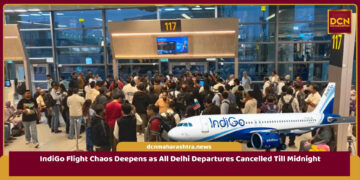Special Correspondent
Pune : A SpiceJet Q400 flight operating from Goa to Pune on Tuesday witnessed a mid-air incident that triggered panic among passengers. During the flight, the inner frame of a window dislodged, leading to commotion in the cabin. However, the airline quickly issued a statement clarifying that the part was merely a “cosmetic trim” with no impact on the aircraft’s structural integrity or passenger safety.
In its official statement, SpiceJet explained “A cosmetic window frame on one of SpiceJet’s Q400 aircraft became loose during the flight and was found dislodged. This is a non-structural trim component used for shade and aesthetics, and it has no role in maintaining the aircraft’s pressurization or structural safety.”
Passengers onboard the flight reported hearing a sudden noise near the window, followed by part of the frame becoming visibly loose. This caused a brief period of anxiety, with some passengers visibly distressed. However, cabin crew responded swiftly, calmed the passengers, and maintained order throughout the remainder of the flight.
The aircraft landed safely at Pune Airport without any injuries or further complications. After landing, the affected window was inspected and the cosmetic panel was fixed as per standard maintenance protocols. “This is a routine maintenance issue. Cosmetic elements like these are regularly checked and corrected as part of standard procedures,” the airline added.
The Directorate General of Civil Aviation (DGCA) has taken note of the incident and is expected to initiate a preliminary inquiry if required, according to aviation sources.
Although SpiceJet emphasized that passenger safety was never compromised, the incident adds to the growing concern about aircraft maintenance standards in India. Over the past few months, Indian carriers have faced multiple reports of mid-air technical issues and emergency landings, prompting questions over regulatory compliance and upkeep procedures.
This event comes in the wake of a tragic accident involving an aircraft in Ahmedabad, which reignited debates around aviation safety in the country. The repeated emergence of such incidents—even minor ones—points to a pressing need for airlines and regulators to enforce stricter oversight and preventive maintenance standards.
While such incidents are extremely rare in Q400 aircraft, experts argue that even non-structural failures reflect on the broader state of airline maintenance practices. Cosmetic or not, any malfunction during a flight raises legitimate fears among travelers.
As India’s aviation sector continues to grow rapidly, maintaining global standards of safety will remain critical for sustaining public trust and preventing future mishaps.

















